Irritated and sensitive skin can be tricky to deal with – whether it’s because your skin is innately sensitive, or because it’s messed up from harsh products or harsh weather.
I recently sat down with my friend Hannah English to talk about our favourite tips and products for irritated skin. She’s a pharmaceutical scientist and skincare content creator who shares a lot of skincare science on Instagram (she’s @ms_hannah_e).
She also has rosacea, which is a really confusing skin condition that not many people even realise they have. So we talked about rosacea, as well as some other irritated skin conditions like perioral dermatitis and folliculitis (red “pimples” you might get after exercising).
The video is here, keep scrolling for the text version…
Active ingredients for irritated skin
Michelle: Let’s start with active ingredients for irritated skin.
I used to think that you couldn’t use any actives on irritated skin, because so many of the evidence-based actives in skincare are irritating – retinoids, exfoliants, vitamin C… and it was actually you who made me realise that there are actives you can use.
What’s your approach to actives for irritated skin?
Hannah: I try to think about it like: Does this ingredient give back to my skin, or does it take from it?
Michelle: What are some of your favourites for calming down irritated skin and supporting your skin barrier?
Hannah: Panthenol, glycerin and hyaluronic acid – those are hydrating. Panthenol’s a little bit soothing as well. Niacinamide (everyone’s fave) – but not too much. 5 percent, not 10 or 20.
Then there’s barrier support. So we have ceramides, cholesterol, or you might see phytosphingosine – that’s a lipid you find in the outer layer of your skin and it helps to give back to your skin those lipids that it’s maybe missing.
Then we have soothing ingredients. My faves are definitely oat and also centella (“cica”, madecassoside) and copper peptide.
Products for Irritated Skin
Michelle: So moving on to specific products…
I don’t know if I told you this, but your serum actually made me realise how there were lots of actives for irritated skin! Because I used your serum and it was lovely on my skin. Then I looked at the ingredients list, and there was so much stuff in there. This was a revelation to me!
(Side note: I did not invite Hannah onto this post because she’s my friend and I wanted to plug her serum. We are going to talk about other products!)
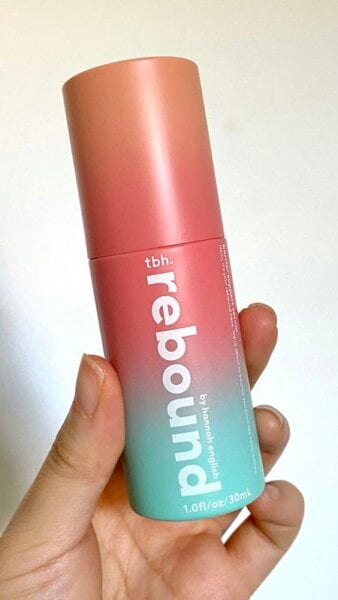
The serum (Tbh Skincare Rebound Serum) is water-based, and most of the time water-based serums really sting when my skin barrier is compromised. This did not. It just felt so lovely! So my mind was blown.
Hannah: I feel like the oat is doing a lot of the lifting there!
My skin was stressed out while we were working on it, so it was good for me to test, but what I wanted was something that would feel calming on contact.
I definitely did feel like there was a gap – there was not much you could get (especially in Australia) that would hydrate, calm, and support your barrier, and didn’t feel thick and balmy.
Michelle: I really love how lightweight it is, and how well it layers. And just the fact that there’s nothing like this on the market. I’ve been using this a few times a week, even when my skin isn’t that irritated, because it just fits into my routine so nicely.
What are your other favorite products for when your skin’s irritated?
Hannah: I really like the La Roche Posay Cicaplast B5 Sheet Masks. You put it on your face and it just feels calm, it’s hydrated – it’s the best! Even after treatments, you know, when your skin feels really hot.
Michelle: I personally just don’t really enjoy sheet masks because I don’t like the feeling of them sliding down my face. So I love the Cicaplast Baume B5 which is getting reformulated to the B5+.
I picked up one up in Europe and so far it seems to be pretty similar on my skin. Maybe a little bit lighter, but I have heard different things from other people.
A lot of people have told me that they really like the Cicaplast B5 Serum as well, but I haven’t tried that enough to really say.
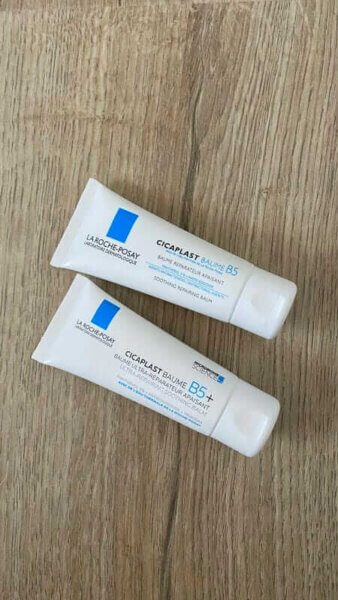
There are a lot of other centella products that are formulated for this sort of skin recovery phase as well, from brands like Bioderma, and there’s quite a few in K-Beauty too like Pyunkang Yul Calming Moisture Repair Balm and Iunik Centella Calming Gel Cream.
Related Post: Reviewing Top Korean Skincare Favorites: Cosrx, Beauty of Joseon and more
Hannah: I quite like NIOD’s Copper Peptide, but the Lipid (NIOD Copper Amino Isolate Lipid 1%) ,which is a sort of gel. It’s great because it’s sort of a one and done PM routine.
Beauty Bay make this moisturizer that’s oat – it’s called Thirst Class Colloidal Oatmeal + Oat Lipid. It’s kind of a bit richer, so I would use it in winter.
Michelle: Yeah, I think oat is just really underrated. I used to make this DIY oat mask back in the day that was just ground up oatmeal mixed with water, and I would just slap it on my skin.
Oat has a lot of hydrating actives and avenanthramides, which are really soothing.
Related post: DIY Skincare – Oatmeal Science
Hannah: If you’re fancy, the Cosmetics 27 Baume 27, which is sort of like a healing oil balm – really beautiful. It has essential oils but they’re chamomile, calendula – those calming ones, not the hectic lavender or anything like that.
Laneige Cream Skin – beautiful, doesn’t have many ingredients.
Michelle: I really love that one too! It’s really lightweight and less ingredients just cuts down that chance of skin reactions.

Along the same lines, with less ingredients but a bit heavier – there’s also Vaseline and Aquaphor, which is mostly just petroleum jelly. And they’re water-free, so there’s a lot less chance of stinging.
There’s also CeraVe Healing Ointment and the QV Sting-Free Ointment, which is the Australian version of that, and they both have ceramides in them too.
I also really like using face oils when I have a compromised skin barrier, because of the lack of water. It just doesn’t tend to sting as much.
Hannah: The Paula’s Choice Advanced Replenishing Toner reminds me of Laneige Cream Skin, only it’s packed with antioxidants as well. So it can almost be your AM serum, if you want a bunch of antioxidants.
I quite like my LED mask (Currentbody Skin Led Light Therapy Mask) as well, I have one that’s red and near infrared. I find when I use it regularly, my skin is just more resilient and can tolerate more things.
I get a little bit tired in the evening, so you just put it on, and then you’ve “done skincare”, and it’s one less layer on your face.
Gentler Versions of Actives
Michelle: I mentioned before that you have to avoid retinoids, exfoliants and vitamin C. But there are gentler versions of those. So what is your policy on using these when your skin’s irritated?
Hannah: It really depends for me on how irritated my skin is, but I do have some gentler versions of my actives.
La Roche-Posay C10 Vitamin C Face Serum is an example. That one has 10% vitamin C but also their Neurosensine peptide and a bit of salicylic acid. So I have literally never had an issue with that product and I have issues with vitamin C.
And if I wanted a retinoid, the Kiehl’s Microdose (Kiehl’s Retinol Skin-Renewing Daily Micro-Dose Serum). It’s enough to have an effect, but it’s not enough to cause any issues, so that’s also a perfect beginner retinoid in general. And it has ceramides to replenish your skin as it works.
Michelle: I also really like using derivatives of vitamin C and A when my skin’s irritated. Because while there is less evidence for them working, they are a lot gentler… which I guess could be because they’re not working as well. But it is a nice fallback option.
Related Post: Easy (5 Minute) DIY Vitamin C Serum Recipe
My favorite, less irritating derivatives for vitamin C are:
- ascorbyl glucoside (The Ordinary Ascorbyl Glucoside, Avene A-Oxitive Antioxidant Defense Serum)
- magnesium ascorbyl phosphate (The Ordinary Magnesium Ascorbyl Phosphate)
- THDA/ATIP, which are the same thing (Medik8 C-Tetra Lipid)
For Vitamin A, I like Granactive retinoid (The Ordinary Granactive Retinoid).
Related Post: Best and Worst of The Ordinary Part 1 (with video)
For gentle chemical exfoliation, I like using polyhydroxy acids, although I do also sometimes use a very small amount of salicylic acid, since it can be soothing. But you do have to be pretty careful because a lot of the formulas are quite harsh.
How Long Does Barrier Repair Take?
Michelle: So one question I get asked a lot is: how long do you generally have to wait for your barrier to fix itself, before you can go back to your usual products?
Hannah: I am getting pretty good at repairing mine and recognizing the signs before I truly obliterate it – so a week or two.
Recently I had a facial where they used an enzyme exfoliant, and it was a bit scrubby and I felt a bit tingly around the mouth. I thought it would be fine – it wasn’t fine. The next few days it was tingly, and so I just cut the actives for about two weeks. Previous times it’s taken me three months.
Michelle: That is so long! Yeah, I think it is just a lot easier to not mess up your skin barrier in the first place.
The longest my skin has taken is probably a week or two, but it depends a lot on the type of irritation.
With perioral dermatitis, usually that’s maybe a day or two. If my nose is peeling off after a cold, then that will usually be over a week.
Cleansers for irritated skin
Michelle: Now with cleansers – which ones do you like for irritated skin?
Hannah: I like to use fragrance-free cleansers because, if your barrier is a little bit compromised, then things get in further. Even if they wouldn’t normally irritate you, they can.
I like Avene Extremely Gentle Cleanser. I like Biologique Recherche Lait U Botanical Milk Cleanser – that is the one that’s for oily skin, but it’s a cream.
And I like a really soft washcloth, like that really flammable fluffy polyester (you can wash them in a guppy bag to catch microfibres).
Michelle: I also like fragrance-free cleansers where my skin’s irritated. Some of my favorites are from Geek and Gorgeous, Hada Labo, and Bondi Sands.
All of those don’t strip skin, and like you said, they have moisturising ingredients that “give back” to the skin.
I also really like using Bioderma Micellar Water with soft, reusable cotton rounds. The Bioderma was specifically designed and tested for sensitive skin, and reusable cotton rounds are just really soft.
Sun Protection
Michelle: Now we are Australians, so of course, we have to talk about sun protection!
What is your approach when your skin’s irritated?
Hannah: There are a couple of sunscreens I know not to use, because they can feel a little bit spicy on the cheeks if my skin is irritated. But generally I will look for one that is formulated for sensitive skin.
I really like those European pharmacy brands that cater to this type of skin.
Related Post: How to Reapply Sunscreen Over Makeup (with video)
Michelle: Yeah – I think there is this sort of assumption that you have to use zinc oxide if your skin’s irritated. But sometimes that’s not the best option, and newer sunscreen filters can be really non-irritating.
If you go into a French pharmacy, you’ll see that all of their sensitive skin sunscreens are actually all chemical sunscreens, they have those newer filters.
Some people actually find zinc oxide more irritating because it is drying and it’s quite irritating when you’re rubbing it in, because it’s so thick and sticky and also just trying to get it off with cleanser at the end.
On top of that, they’re not always truly free from chemical sunscreens. I’ve talked about this before – there are these “SPF boosters” that are in a lot of mineral sunscreens, and they have almost identical properties to a lot of properly approved chemical sunscreens.
Related Post: “100% mineral sunscreens” using unregulated chemical filters
I’ve actually talked to quite a few people who’ve told me that they react to some mineral sunscreens and not others. And then they checked and they saw that the ones that they do react to have butyloctyl salicylate.
Some sunscreens for sensitive skin:
- La Roche-Posay Anthelios Ultra Face Sunscreen
- Avene Face Emulsion Sunscreen
- Hamilton Sun Sensitive Lotion
- Cancer Council Sensitive Sunscreen
Other tips and tricks
Michelle: What other tips and tricks do you have for irritated skin?
Hannah: I think a lot of people don’t know that your skin it exfoliates itself, right?
It’s called desquamation, and it does that better when it is adequately hydrated. So I would always try to hydrate my skin before I try to exfoliate it.
If it’s flaking, you might find that the flakes take care of themselves that way.
I also really like doing several layers of one toner (e.g. Paula’s Choice Advanced Replenishing Toner, AHC Hyaluronic Toner). Putting several layers of one product on is better than putting four or five different products – less opportunity to upset your skin, freak it out.
Michelle: I also find that with flaky skin, if I have to get rid of them before putting on makeup, then I will wet my skin and use a peeling gel very, very carefully and just buff in tiny circles, and that seems to do the least damage.
But that is a really emergency sort of thing. I wouldn’t recommend doing that regularly when your skin is compromised, because the hydration technique is so much safer.
Perioral dermatitis
Michelle: You also gave me some really good tips for perioral dermatitis, which is a newer issue for me.

It’s a red rash that comes up around your mouth and near the sides of your nose, and it’s been coming up more because of mask wearing. The extra humidity can lead to an impaired barrier and imbalance microbes, and that can contribute to perioral dermatitis.
So I’ve had to change a few things when it flares up, like adding a cleanser in the morning, which I don’t usually do.
When my skin is happy, then extra cleansing tends to mess it up more and dehydrate my skin. But when that perioral dermatitis is flaring, then my skin’s already messed up, so cleansing actually takes it back towards happy.
Do you have any other tips?
Hannah: If you think it might be perioral dermatitis never put steroids on it. That’s a Dr Cara-ism (that’s my beloved dermatologist).
Perioral dermatitis involves imbalanced microbiome, but it can also happen from steroid withdrawal. Because the steroids put your immune system to sleep a little bit. Your immune system was there, sort of keeping the microbiome in check.
Perioral Dermatitis
Steroids (corticosteroids) e.g. hydrocortisone, betamethasone = helpful for some skin conditions but can make perioral dermatitis worse! Risk factors:
|
Folliculitis
Michelle: Speaking of microbiome, I’ve found that I sometimes get very superficial folliculitis on my body when my skin gets irritated – like after exercising and I’m sweaty, and my clothes have been rubbing in my armpits and in my… crotchal region. And it’s usually worse when I’m a bit run down from stress and lack of sleep.
Basically, this is when bacteria infect your hair follicles, and you get red bumps with pus that look like shallow inflamed pimples.
Related post: Body Skincare: Tips, Products & How You Should Shower (with video)
For these, I like to use a benzoyl peroxide cleanser. Most of these are meant for the face, but dermatologists have been recommending it for body folliculitis too and it’s been working really well for me.
I use it right after I exercise and also when I’m having a flare. And just also not marinating in sweaty clothes helps a lot.
But if it’s really deep and painful and not going away, then definitely see a doctor because you might need antibiotics or something else – or it might not be folliculitis.
Related post: Why Benzoyl Peroxide Is a Great Acne Treatment
Rosacea
Michelle: I get asked about rosacea a lot, and it’s a bit of a confusing condition that not a lot of people talk about. So what is rosacea?
Hannah: Rosacea is a chronic inflammatory skin condition. My dermatologist explained it to me as: it’s the blood vessels that are inflamed, not the pores like you would have in acne.
You’ll see visible blood vessels, so those little red ones (called telangiectasias), redness, flushing. You’ll see a symmetrical pattern of redness – mine comes and goes.
You might get pimple-like bumps, but it won’t be in the t-zone – it’ll be around the cheeks and the nose (the “W-zone”).
Michelle: It gets confused a lot with acne, and it tends to show up from your late 20s onwards.
How did you first suspect that you had rosacea?
Hannah: I was at an event and Dr. Dennis was there. I said, “You know what – I’m always like flushing pink and red, sometimes through my cheeks. What’s going on? Is that something I can treat?”
He’s like, “Well – that’s rosacea.” And I was like [thumps table] “See ya!” I didn’t want to know.
Rosacea
Common signs
|
Rosacea treatment and management
Michelle: Why should you actually look into managing rosacea?
Hannah: The thing about rosacea is that it progresses.
You’ll start with just the pink flushing, and maybe some visible blood vessels around the nose – you can get them in your cheeks too.
And then you’ll start to get lesions, and you can also have it get into your eyes, and then it can progress to thickened skin and swelling.
Michelle: In terms of treating rosacea – there are over-the-counter options like azelaic acid. You should also see a dermatologist who has experience with treating rosacea (and diagnosing it in the first place!), and they’ll have other options available.
How else do you manage rosacea?
Hannah: Keeping on top of your skin barrier, really supporting it is number one.
Avoiding triggers – you’ll notice when you start to flush from certain things.
The sun is a big one. My skin hates the indoor heating – hates it! Alcohol, some foods, even spicy food, is a big one. Especially for like, pale people, that only eat meat and vegetables…
Some medicines even do it, your skin care or makeup could do it.
Rosacea Treatments
Rosacea Management
|
Michelle: I feel like in the skincare community we talk so much about acne, but nowhere near as much about rosacea. So if any of this is sounding familiar then you might want to read up a bit on rosacea and consider getting it checked out. Also keep in mind that if you have darker skin, the redness will be harder to see.
Some extra resources:
I hope you enjoyed this nerdy chat!
You can check out Hannah’s website, Instagram and YouTube channel. She’s also written a great book: Your Best Skin: The Science of Skincare. If you weren’t already aware, I also have an eBook: The Lab Muffin Guide to Basic Skincare.
Please share any other tips you have, and I hope this post helps your skin be less grumpy at you!
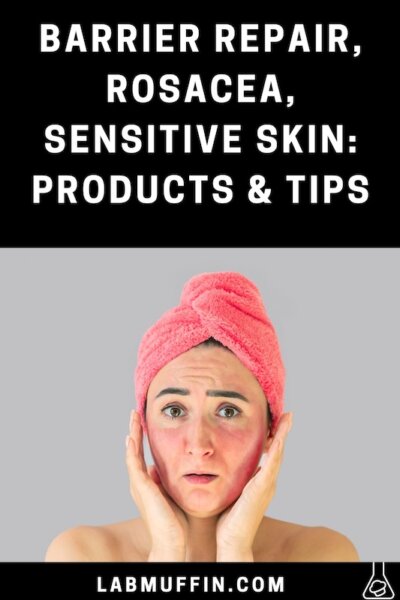



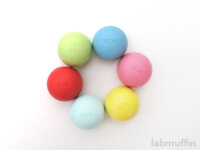
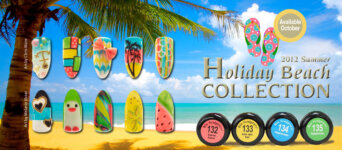
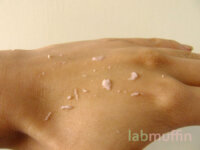
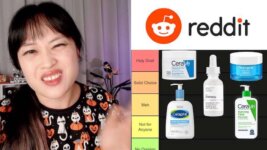
Hi Michelle! I’ve tried accessing this a few different ways but can’t see the video. Would you just be able to confirm that it is linked correctly?
So sorry it was a premature publication! It’s up now: https://youtu.be/399PRMvahWg
My primary doctor thinks I have rosacea but I can’t see a dermatologist for another 3 months. Any ingredients I should avoid in a cleanser or a specific cleanser recommendation? Thank you! Overall, this article was very informative!